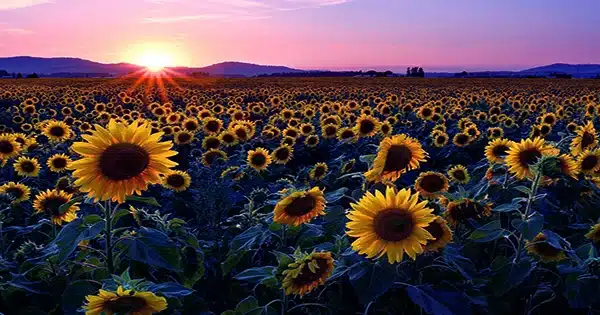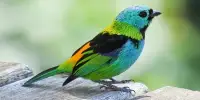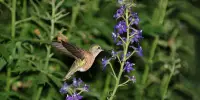Sunflowers are well-known for turning their faces to follow the sun as it crosses the sky. But how do sunflowers “see” the sun so that they can follow it? Plant biologists from the University of California, Davis used a different, innovative mechanism than previously understood, according to new research published Oct. 31 in PLOS Biology.
“This was a complete surprise to us,” said Stacey Harmer, UC Davis professor of plant biology and senior author on the paper.
Most plants exhibit phototropism, or the capacity to grow in the direction of a light source. Plant scientists anticipated that sunflowers’ heliotropism, or capacity to follow the sun, would be based on the same basic process, which is mediated by a chemical called phototropin that responds to blue light.

Sunflowers swing their heads by growing a little more on the east side of the stem during the day, pushing the head west, and slightly less on the west side at night, swinging the head back toward the east. Harmer’s lab at the University of California, Davis, has previously demonstrated how sunflowers use their internal circadian clock to anticipate sunrise and to time the blooming of florets with the presence of pollination insects in the morning.
In the latest study, graduate student Christopher Brooks, postdoctoral researcher Hagatop Atamian, and Harmer investigated which genes were activated (transcribed) in sunflowers cultivated indoors in laboratory growth chambers and in sunflowers grown outside in sunshine.
Indoors, sunflowers grew straight toward the light, activating phototropin-related genes. Plants growing outside, with their heads swinging with the sun, displayed a completely distinct pattern of gene expression. There was no discernible variation in phototropin levels between the two sides of the stem.
The genes implicated in heliotropism have yet to be identified by the researchers.
“We seem to have ruled out the phototropin pathway, but we did not find a clear smoking gun,” said Harmer.
The heliotropism reaction was unaffected by blocking blue, ultraviolet, red, or far-red light with shade boxes. This suggests that numerous paths, each responding to a distinct wavelength of light, may exist to achieve the same purpose. Future research will focus on protein regulation in plants.
Sunflowers are quick to pick up new skills. When plants produced in the lab were taken outside, they began tracking the sun on the first day, according to Harmer. This behavior was accompanied by a surge of gene expression on the plant’s shaded side, which did not occur on future days. She believes this indicates some sort of “rewiring” is taking place.
The discovery has significant implications, according to Harmer, aside from disclosing previously identified routes for light sensing and growth in plants.
“Things that you define in a controlled environment like a growth chamber may not work out in the real world,” she went on to say. Atamian is now a Chapman University assistant professor.















